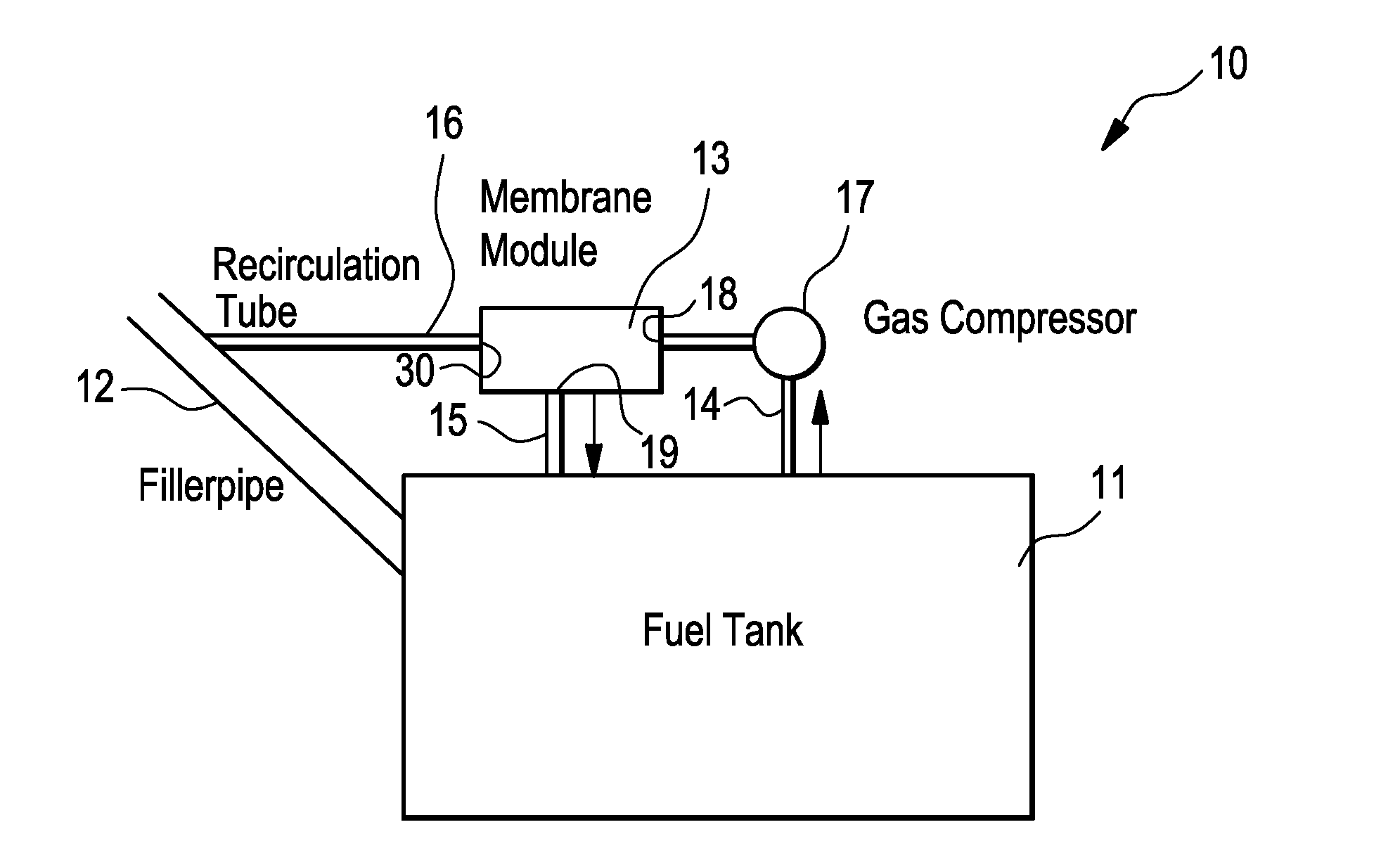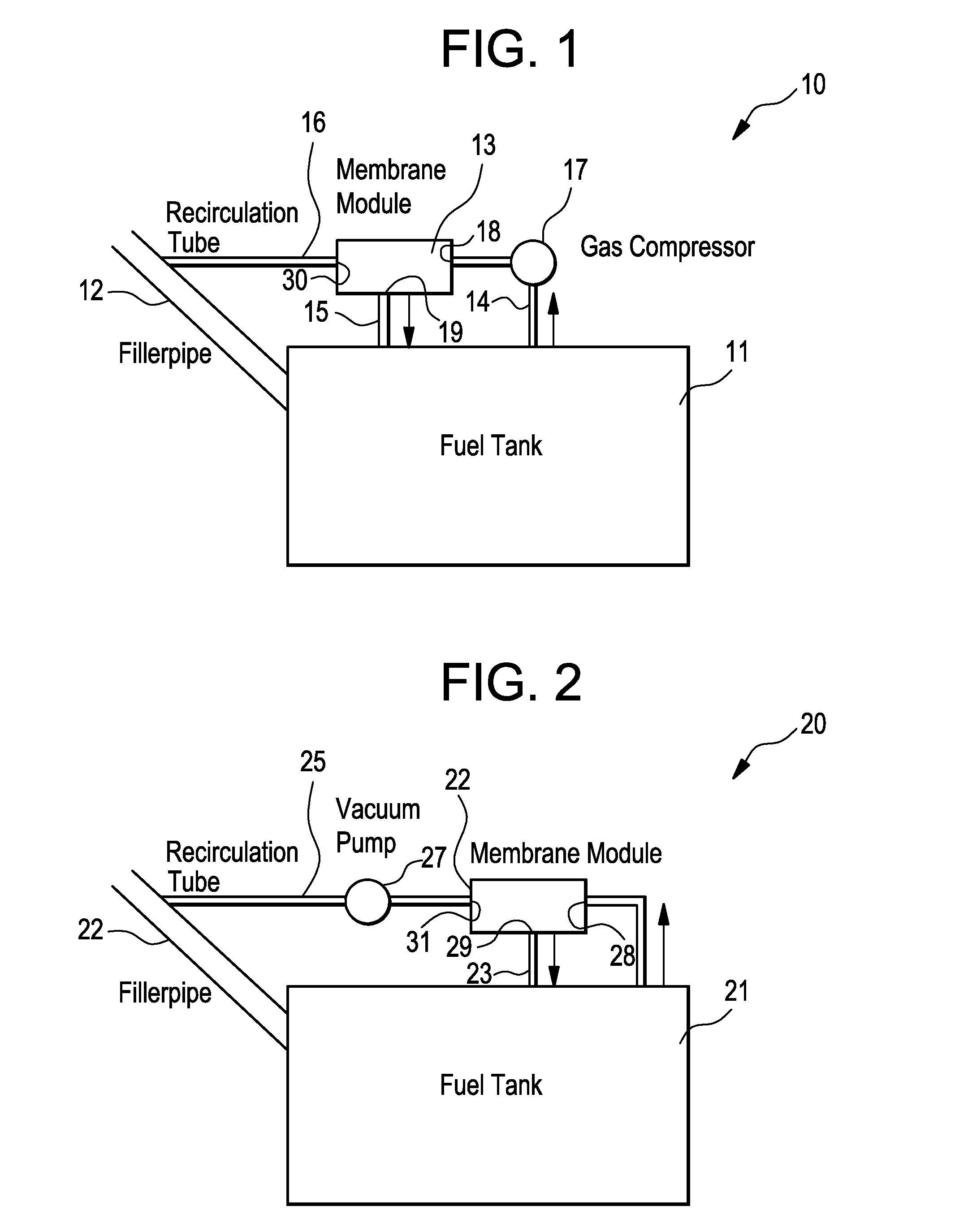Hydrocarbon separation from air using membrane separators in recirculation tube
a technology of membrane separator and hydrocarbon separation tube, which is applied in the direction of combustion air/fuel-air treatment, machines/engines, transportation and packaging, etc., can solve the problems of increasing the complexity and cost of the evaporative emissions system, requiring additional space considerations, and using additional canisters. the effect of reducing the load on the canister system, optimizing the overall evaporative emissions system, and efficient configuration
- Summary
- Abstract
- Description
- Claims
- Application Information
AI Technical Summary
Benefits of technology
Problems solved by technology
Method used
Image
Examples
Embodiment Construction
[0026]In accordance with the present invention, an effective separation system is employed for separating hydrocarbon fuel vapor molecules from air in an air / hydrocarbon fuel vapor mixture.
[0027]In one aspect of the invention, as illustrated in FIG. 1, the separation system 10 comprises a fuel tank 11 for receiving and storing fuel for powering an internal combustion engine. During the fueling stage where fuel from a fuel source, is pumped via a fuel nozzle into the fuel tank through filler pipe 12 via a fuel nozzle (not shown), pressure from a build-up of a vapor mixture of hydrocarbon fuel vapor and air causes the hydrocarbon fuel vapor / air mixture in the fuel tank 11 to flow from the fuel tank 11 to a membrane 32 disposed in a separation device 13 via port 18 through outlet line 14. The hydrocarbon fuel vapor is separated from the air / hydrocarbon fuel mixture in the membrane separation device 13 and returned to the fuel tank 11 via port 19 through hydrocarbon fuel return line 15....
PUM
 Login to View More
Login to View More Abstract
Description
Claims
Application Information
 Login to View More
Login to View More - R&D
- Intellectual Property
- Life Sciences
- Materials
- Tech Scout
- Unparalleled Data Quality
- Higher Quality Content
- 60% Fewer Hallucinations
Browse by: Latest US Patents, China's latest patents, Technical Efficacy Thesaurus, Application Domain, Technology Topic, Popular Technical Reports.
© 2025 PatSnap. All rights reserved.Legal|Privacy policy|Modern Slavery Act Transparency Statement|Sitemap|About US| Contact US: help@patsnap.com


